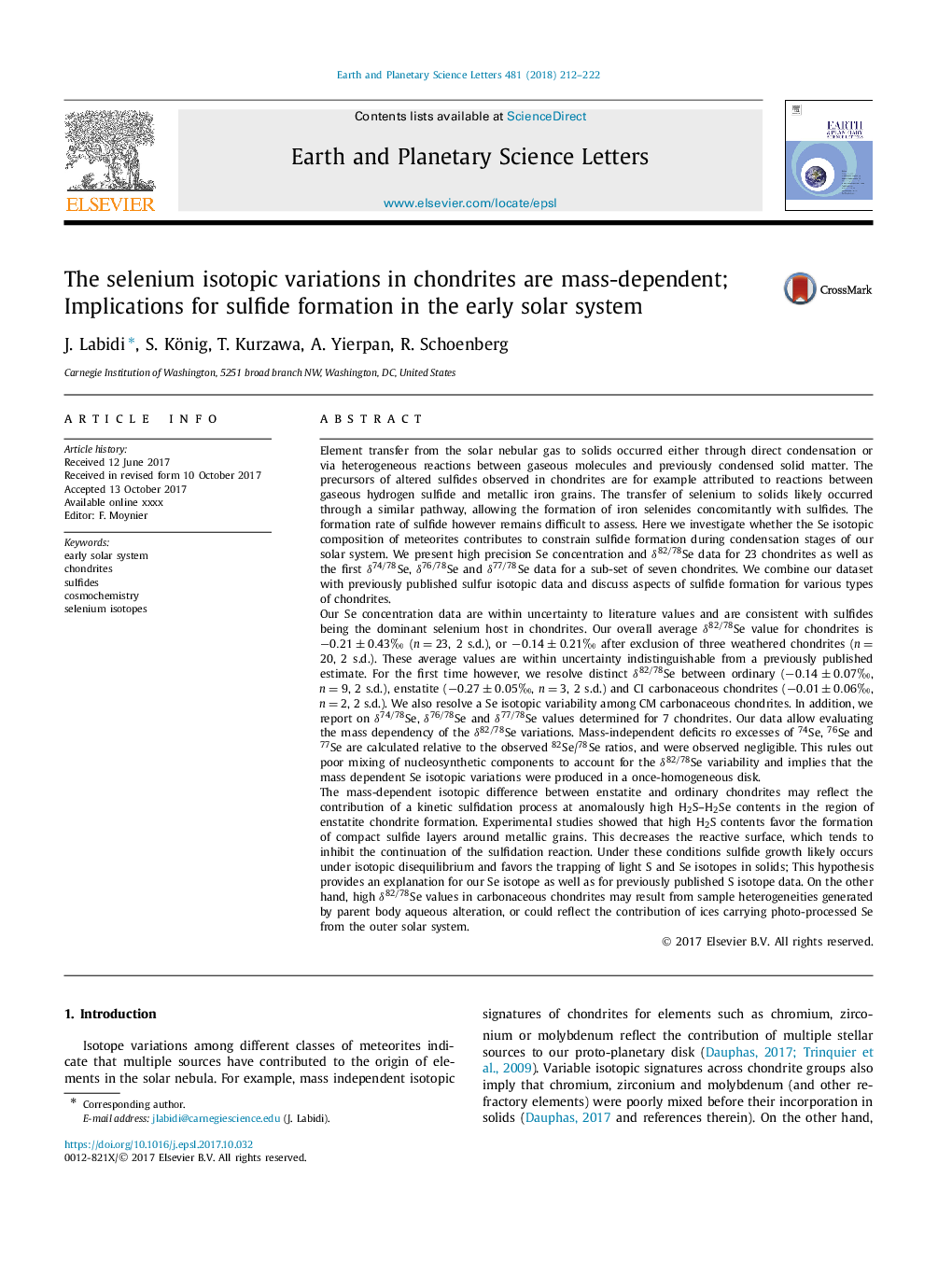| Article ID | Journal | Published Year | Pages | File Type |
|---|---|---|---|---|
| 8907343 | Earth and Planetary Science Letters | 2018 | 11 Pages |
Abstract
The mass-dependent isotopic difference between enstatite and ordinary chondrites may reflect the contribution of a kinetic sulfidation process at anomalously high H2S-H2Se contents in the region of enstatite chondrite formation. Experimental studies showed that high H2S contents favor the formation of compact sulfide layers around metallic grains. This decreases the reactive surface, which tends to inhibit the continuation of the sulfidation reaction. Under these conditions sulfide growth likely occurs under isotopic disequilibrium and favors the trapping of light S and Se isotopes in solids; This hypothesis provides an explanation for our Se isotope as well as for previously published S isotope data. On the other hand, high δ82/78Se values in carbonaceous chondrites may result from sample heterogeneities generated by parent body aqueous alteration, or could reflect the contribution of ices carrying photo-processed Se from the outer solar system.
Related Topics
Physical Sciences and Engineering
Earth and Planetary Sciences
Earth and Planetary Sciences (General)
Authors
J. Labidi, S. König, T. Kurzawa, A. Yierpan, R. Schoenberg,
